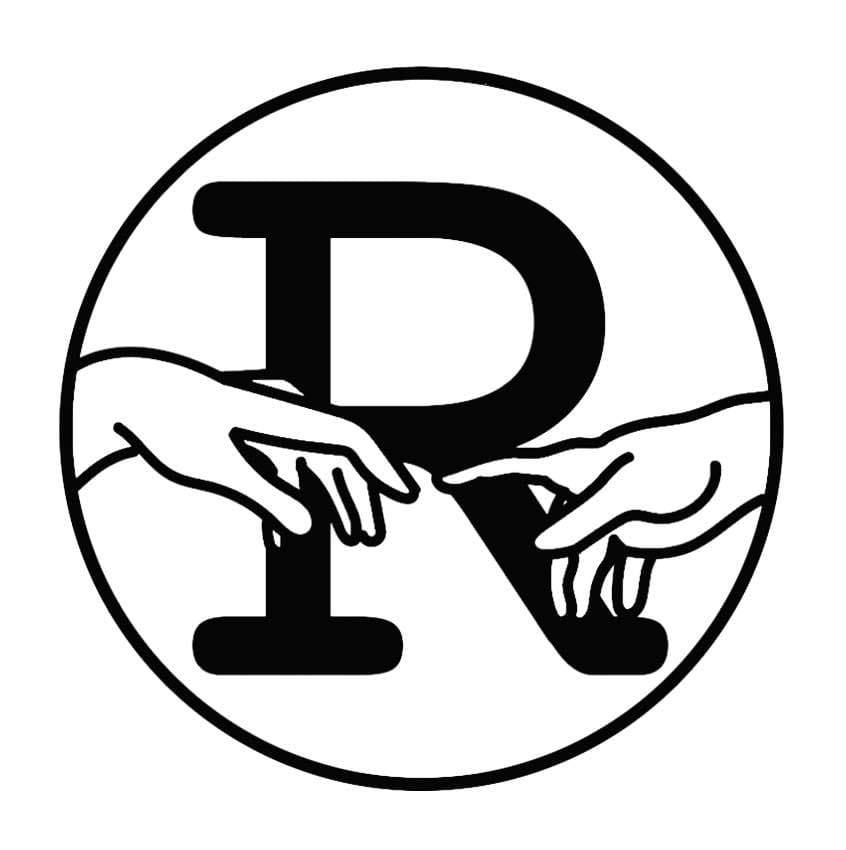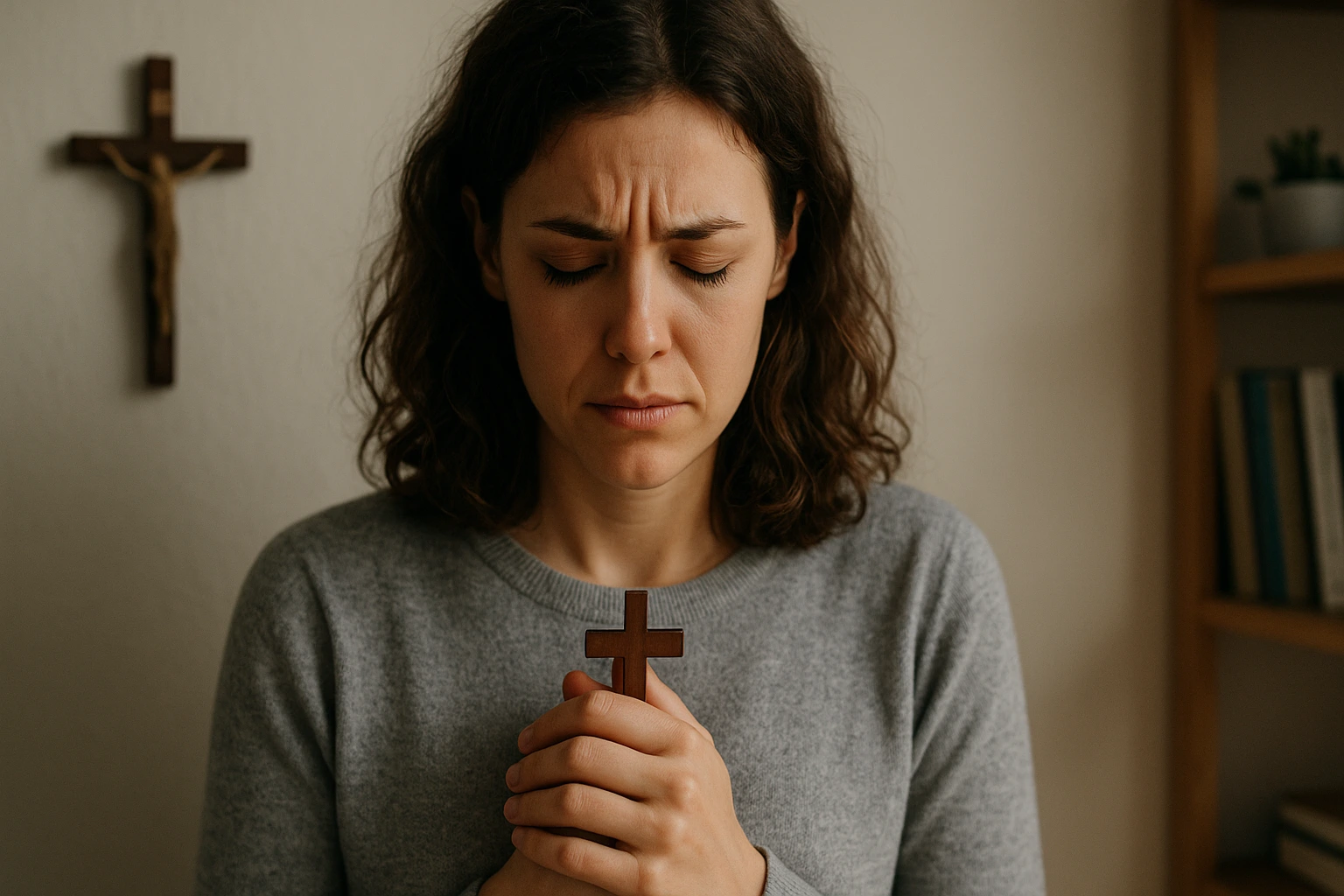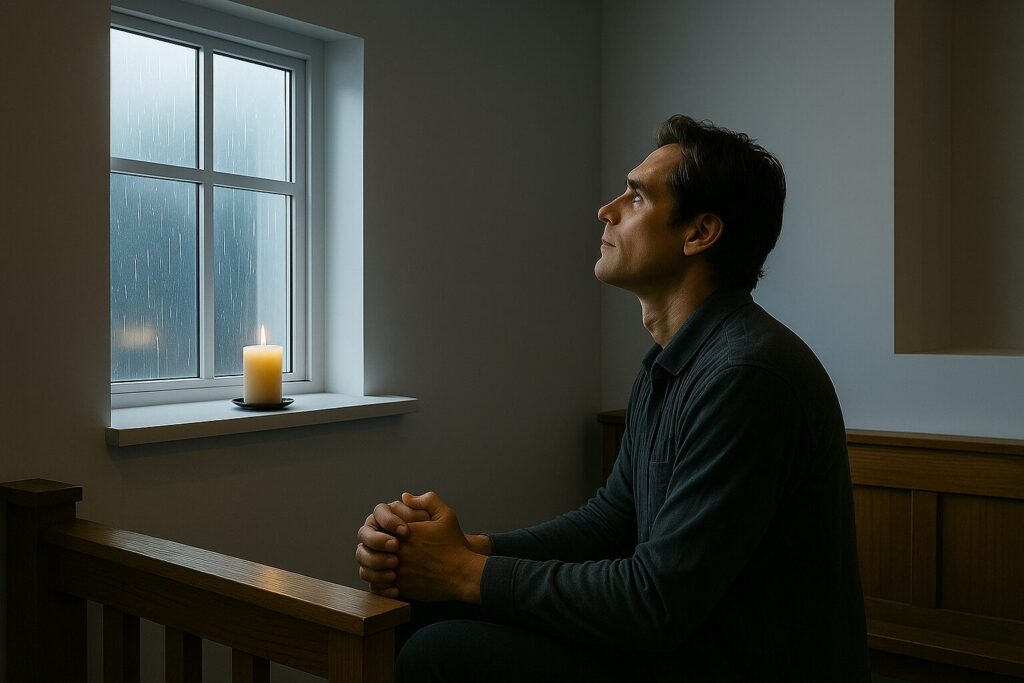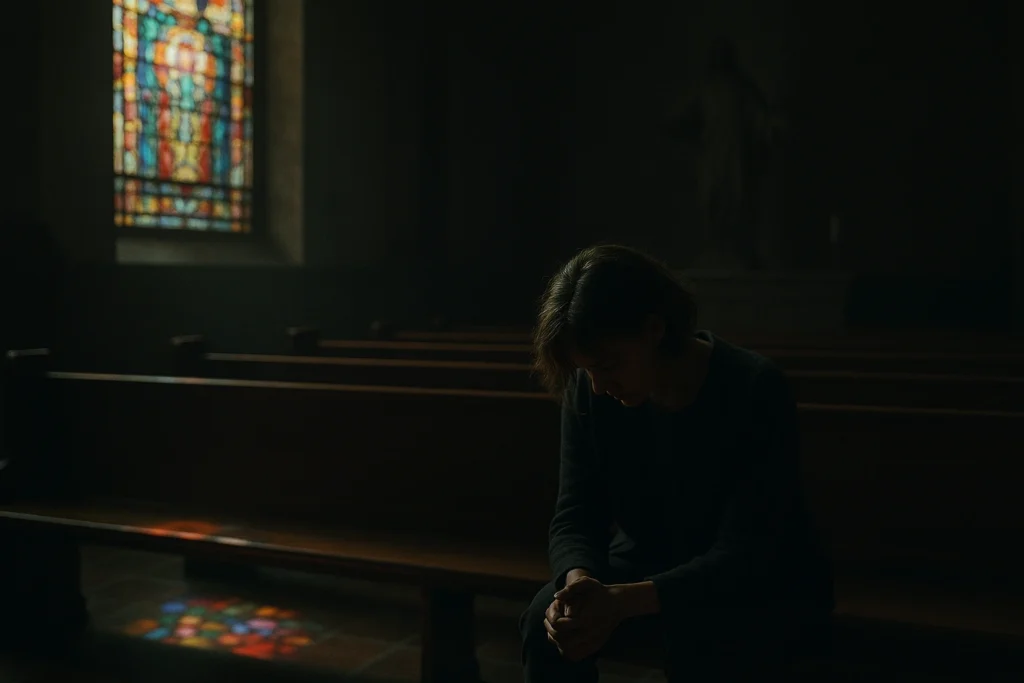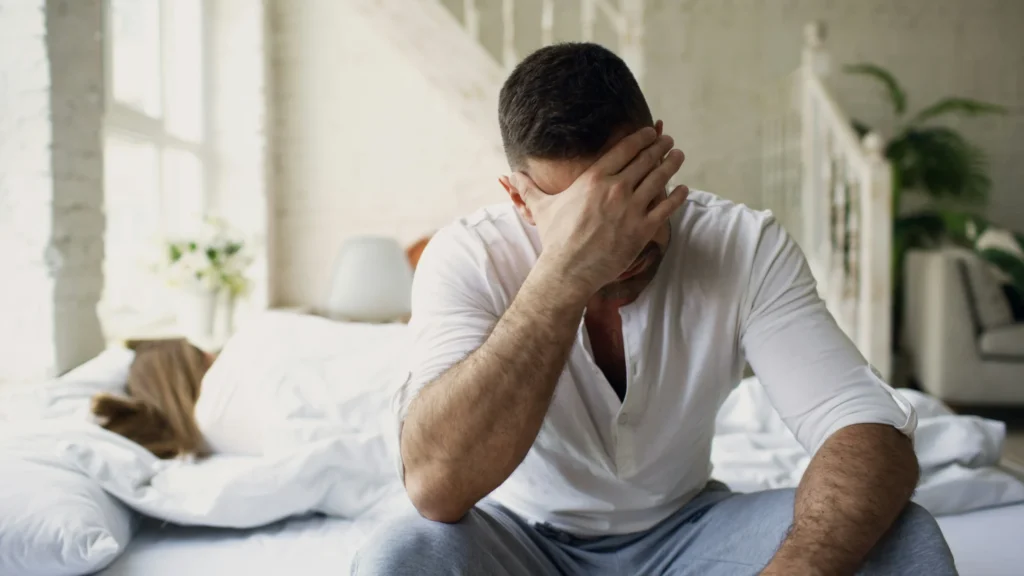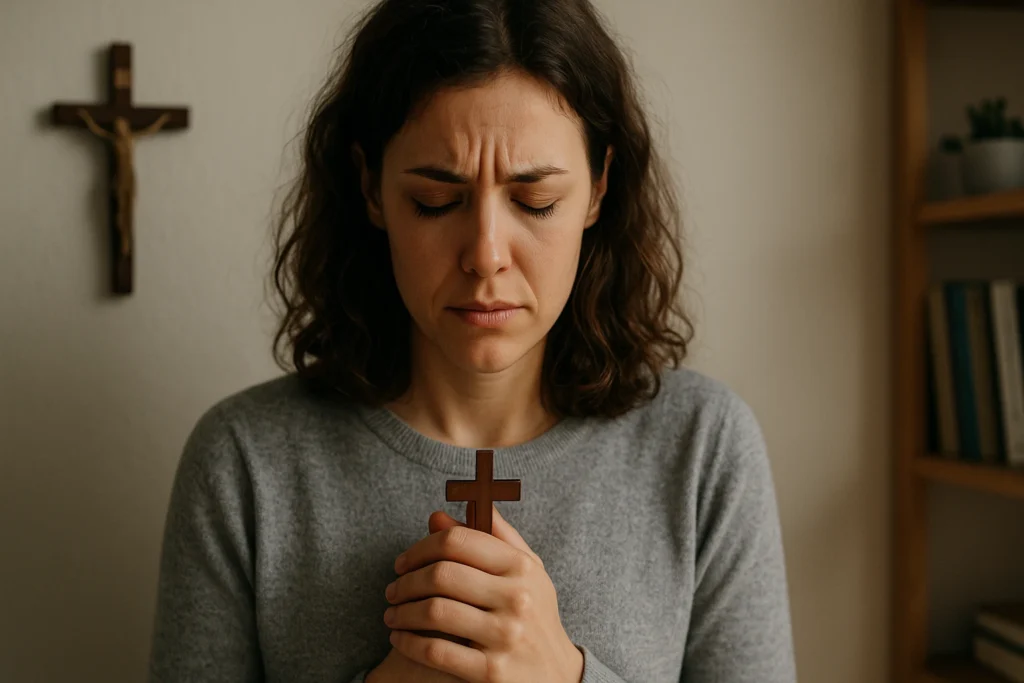Listen to Luke Johanni speak about this article on the Mind and Spirit Podcast!
The Truth About Anxiety: Explore how Catholic teaching and modern psychology together offer a path to healing.
Healing begins at the same place, recognizing God’s gift of love, accepting it, and reclaiming God’s mercy over your anxiety.
You ever lie awake at night replaying a conversation, wondering if you sounded foolish or if it’s going to cost you somehow? Your chest tightens, your mind won’t stop racing with “what ifs,” and sleep just doesn’t come. That constant feeling that something bad is just around the corner..
Hi everybody, welcome back to Mind and Spirit the podcast we’re Catholic faith meets psychology and we explore what real healing looks like. I’m Luke Johanni you’re Catholic integrated therapist.
In today’s episode, we are talking about anxiety, 4 distinct categories of anxiety, how to identify your own anxiety, and helpful tricks to start working on it.
What is anxiety? This word is thrown around a lot! Phrases like, “I have anxiety.” “I’m so anxious.” Have become common, normal, and accepted as anything. You’ve probably said it yourself. I know I have. But do we really know what we’re talking about? Are we all describing the same thing; or, could our experiences be totally different? Is it born out of fear, or a desire for control or knowledge? Are we called to live in anxiety, or to surrender the unknown to God?
Let’s dig in.
I’d also like to point out that anxiety is not fear.
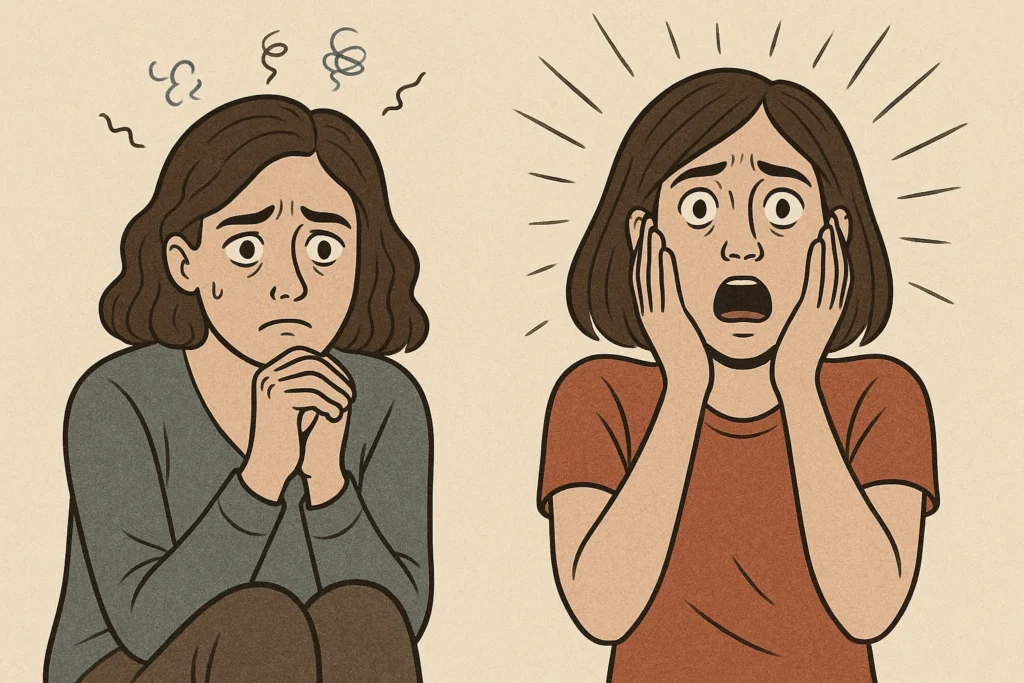
Anxiety and Fear
To start off, its important, for me, to clarify that anxiety can manifest in two ways: one as an ordinary emotion and the other as a disorder. How so? Well, to give a mental image here, as an emotion it is like a warning light on a car that says “Hey, something might be off.” We then look into it and realize that things are okay. While as a disorder it is like a warning light that even after checking and trying to rest it, it simply won’t turn off, even when everything is fine. The key distinction here is staying stuck on the concern.
I’d also like to point out that anxiety is not fear.
The American Psychological Association (also known as the APA) explains that anxiety is a current concern about a future potential danger (and on the clinical level, that is a danger that has no rational cause for immediate concern.) Fear on the other hand, is considered to be an appropriate response to an immediate (in the present) specific danger that we can clearly identify. To be clear, anxiety is not considered to be rooted in reality, but still FEELS VERY REAL.
Four Categories of Anxiety
Now to help with the overgeneralization of this term, I have come to break anxiety down into four identifiable categories. Clinical Anxiety, Situational Anxiety, Trauma-Based Anxiety, and Spiritual Anxiety.
First Category: Clinical Anxiety:
This includes the typical diagnosable disorders of: Generalized Anxiety Disorder, panic attacks, social anxiety, and phobias. This anxiety isn’t just the emotion of anxiety or “nervous feelings.” This truly interrupts your life and makes completing daily activities hard.
To be a disorder, the anxiety typically must
- Last for a certain period of time (not just a bad week).
- Involve physical symptoms like racing heart, muscle tension, or shortness of breath.
- Disrupt your ability to function at home, work, school, or in relationships.
So what does this actually look like in someone’s daily life?
- Imagine trying to head out the door for work, but your chest is tight, your stomach hurts, and you’re convinced you’ll embarrass yourself in a meeting.
- Or maybe you want to go to a friend’s gathering, but the thought of walking into the room makes you sweat, shake, and ultimately cancel.
Clinical anxiety isn’t just uncomfortable. It can keep you from living the life you want.
Statistically, the National Institute of Mental Health has published that over 19% of U.S. adults experience this level of anxiety ever year. Child experience this level at a high percentage with over 31% (3 in 10 children) experiencing disorder levels of anxiety.
The good news with all of this is that anxiety is treatable. Cognitive Behavioral Therapy has a strong success rate with anxiety disorders. For those who need more, there are also medications that help. Finally, building and strengthening a spiritual life has been demonstrated to act as a significant factor in healing.
Clinical anxiety isn’t just uncomfortable. It can keep you from living the life you want.
Second Category: Situational Anxiety.
This one is extremely common. This is brought on by a perceived threat from a specific situation, for example public speaking, conflict with a loved one, and financial hardship. It is a natural reaction to stress that everyone encounters. It’s real anxiety, but unlike clinical anxiety, it is not chronic, it is often short term.
Generally, this is a normal reaction to stress. Like the clinical anxiety, this can have similar physical symptoms and emotions and reduce their ability to function. On the extreme end, this can result in a temporary disorder called Adjustment Disorder (which is as it sounds, caused by difficulty adjusting or responding to a specific situation.)
Simple relaxation and grounding exercises practiced over time can work wonders for individuals struggling with this type of anxiety. Exercises like diaphragmatic breathing, naming things in your environment, prayer, journaling, and even repeating truths like “I can do this” or scripture “Be not afraid” are small but impactful actions that can help this type of anxiety.
Third Category: Trauma-based Anxiety
For me, this is the most difficult one to explain because it’s a kind of anxiety that doesn’t go away just because you know you’re safe. Your fighting more than that because your body still believes you’re not safe.
This form of anxiety manifests as a symptom of post-traumatic stress disorder, PTSD. It has the qualities of clinical anxiety but is attributed to a specific traumatizing event. A good example, here, would be of women, who have been abused in a relationship. And when they get and are now safe, still fear for their safety. They might be told and hear that they are safe, but their bodies and brain are not allowing them to be maintain an internal peace.
As the Cleveland Clinic explains, PTSD can include flashbacks, nightmares, and on overactive fight-or-flight response. One result for such women, often is a long term fear and inability to trust other men, good men. Men who have not committed such terrible offenses. This is a result of the physical body and brain not healing from the trauma.
Left unchecked, untreated, this can erode your sense of safety and even sense of self. Again the good news here, is that this PTSD anxiety can decrease and heal with proper treatment and time.
Fourth Category: Spiritual Anxiety
Don’t lose courage when you fall, but get up gently and begin again.
This form of anxiety can manifest on a variety of different levels. On the low end of the spectrum this would be general anxiety about your spiritual life throughout the day throughout the week am I doing what’s right am I doing what’s good. On the more extreme end of the spectrum it comes from it’s a manifestation symptom that comes from what’s called in theological terms scrupulosity.
Scrupulosity is a religious focused form of OCD which is obsessive compulsive disorder. So, on this extreme anxiety is coming from this excessive desire to live out the Christian life perfectly.
The term scrupulosity actually comes from scrupulous which means a small sharp stone or Pebble. The reason for this word is that the way in which individuals with this function is they walk throughout life thinking they have these annoying small pebbles irritating their minds and souls and they just can’t shake it off. And as a result unwanted intrusive thoughts start to create self-doubt, unnecessary guilt, and anxiety.
Ultimately, it leads to perceiving small things as very big things and catastrophizing a small action, a venial maybe sin into a mortal sin a deadly sin. Thus it is connected to anxiety as desiring to live a good life but never being able to.
Pope Francis explains that this form of anxiety can “paralyze us, closing off the path of holiness.”
But St. Francis De Sales encourages us by saying don’t lose courage when you fall, but get up gently and begin again.
On a practical level, this looks like a surrender of our anxiety to Christ. It’s a laying down of the unknown of are questions at the foot of the cross. It’s a surrender to the will of the Father and a trust in His design and will for our life.
God isn’t measuring you by your perfection. There isn’t some bar you have to hit to be loved by God. God’s love is never ending, it is unconditional, you have it regardless of how you live or behave. We are called to rise above our past to embrace love and to live out God’s design and will of love. As Catholicism explains, God’s love is not something we earn. It is given. We must choose to embrace that love and work with the grace that comes from His love (CCC 1996-2001).
If you’ve been here, know that you’re not alone. Spiritual anxiety can be rooted in many places. But healing begins at the same place, recognizing God’s gift of love, accepting it, and reclaiming God’s mercy over your anxiety.
God’s love is not something we earn. It is given. We must choose to embrace that love and work with the grace that comes from His love.
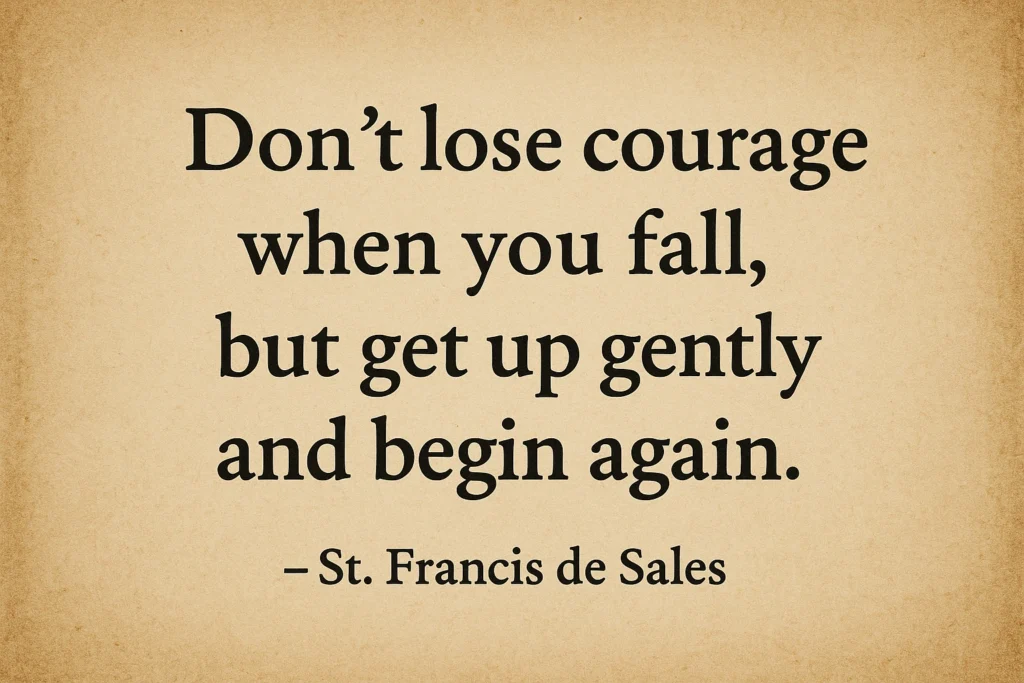
The Importance of Self-Talk in Anxiety
Many people label themselves with anxiety, sometimes in a way that helps, but often in a way that keeps them stuck.
Now before we get to what do we do, we need to understand one other part of ourselves that plays into this. And that is self-talk. The reason I bring this up is because it’s something I see happen a lot, especially online and on social media. Many people label themselves with anxiety, sometimes in a way that helps, but often in a way that keeps them stuck.
For instance, I’ve noticed an online trend of people labeling themselves as either “having anxiety” or “being and anxious person,” but doing so in a way that just accepts it as the way that things are and being okay with living an anxious life. These individuals promote just embracing it and not acting to heal from it. Left unchecked, this way of talking can lead to these labels becoming part of our sense of self, our identity. And then it’s not just a feeling anymore, it’s who you are.
Again to be clear: some people do have an anxiety disorder. And naming that can be freeing. But not everyone who feels anxious needs to wear that label. Especially, if it becomes rooted to your sense of self.
Self-talk (how we talk about ourselves, to ourselves and others) really does matter. And research backs this up. Trine University reported in a study that positive self-talk improves performance, focus, and reduces stress.) Think about that: the way you speak to yourself has measurable effects on your ability to function well.
Self-talk (how we talk about ourselves, to ourselves and others) really does matter.
Cognitive Distortions
In CBT, we target negative self-talk by calling it what it is (a cognitive distortion). That is a distortion of reality that is based in our thoughts. This looks like talking with absolutes, overgeneralizations, or catastrophizing a situation. It sounds like “I’m always anxious,” “I can’t handle this,” or “I’ll mess it up, just like I always do.”
This way of thinking feeds an internal loop that reinforces itself: I feel anxious → So, I tell myself I can’t cope → My body hearing this panics more → I avoid the thoughts/situations that cause this → And then I feel even more anxious.
Talking this way about ourselves, runs the risk of what we said becoming true. It’s like building a house with bad blueprints. The structure just doesn’t hold up.
Accurate and Helpful Thinking
Every thought can either be accurate or inaccurate and helpful or unhelpful.
Now every thought can either be accurate or inaccurate and helpful or unhelpful. This gives us several possibilities inaccurate unhelpful thoughts, inaccurate helpful thoughts, accurate unhelpful thoughts, and accurate helpful thoughts.
Here are some example possibilities:
An inaccurate unhelpful thought looks like “Everyone at work thinks I’m incompetent because I made one mistake.” This thought isn’t true (inaccurate) and it only increases shame and anxiety (unhelpful).
An inaccurate but helpful thought, “This presentation is going to go great—I just know it.” The certainty may not be entirely true (inaccurate), but it helps reduce nerves and boosts confidence (helpful).
An accurate but unhelpful thought looks like, “I’ve struggled with anxiety for years.” True (accurate), but if you stop there, it can feel defeating and keep you stuck (unhelpful).
Accurate & Helpful Thought looks like, “I feel anxious right now, but I’ve managed it before and I have tools that can help me again.” True (accurate) and it empowers you to respond in a healthier, more hopeful way (helpful).
The goal of a healthy sense of self and a healthy lifestyle is to have thoughts that are both accurate helpful.
So, what can we do?
So… If you’re seeing yourself in any one of these 4 types of anxiety and hearing your self-using negative self-talk you’re probably at the point of asking well now what? Which is the right question to ask. The first step to change is being aware. But the answer depends on which of these four types you’re experiencing.
If you’re experiencing Anxiety that is limiting your ability to function, such as caring for yourself, your children, or accomplishing your work, and/or maintain a social life seek professional help, such as counselling or therapy. If need be look into the what medication could do for you. Generally, I do not recommend that as a life-long solution, but rather as a stabilizer and a spring board into the healing work of therapy. The research out there shows that successful treatment and healing is possible.
If you’re dealing with more general daily life stressors, situational stressors, spiritual anxiety, or negative self-talk, use the following technique, called The 3 C’s of CBT.
To explain this tool,, we will use an inaccurate unhelpful thought. Maybe you’ve had this one before: “Because I feel anxious, it must mean I’m weak and I can’t handle life.” Now, if we use the “3 C’s,” we can start to work with that thought instead of letting it run the show.
First, we Catch it. That simply means noticing when it shows up. You pause and say to yourself, “Oh, I’m telling myself that anxiety equals weakness.”
Then we Check it. Ask: Is this really true? No, it’s not. Plenty of strong people experience anxiety: athletes, leaders, parents who juggle a million things. Anxiety is part of being human, not a sign of weakness. If a friend told you this same thought, you wouldn’t agree with them. You’d probably remind them that anxiety says nothing about their worth.
And then comes the last step: Change it. Here’s where we swap in a thought that’s both accurate and helpful. Something like: “Anxiety is my body’s way of preparing for stress. It doesn’t define my strength. I’ve handled challenges before, and I can handle this too.”
Do you hear the difference? Instead of spiraling into shame, now you’re grounding yourself in truth and giving your mind a way forward. That’s the power of the 3 C’s (catch, check, change). That tiny shift opens the door to healing. Learn more on the Resources page.
A Path to Healing Anxiety
But healing from anxiety is not merely a mental exercise. As I’ve mentioned in previous episodes, to achieve wellness, we need to look at our health and wellness from a 4 Fold Approach, rooted in four inherent developmental aspects of our nature. So, wellness needs to come from nurturing our development: biologically, psychologically, socially, and spiritually.
And you can find each of these in the Catechism in sections 365 (which mentions body and soul/spirit), 1704 and 1705 (focused on the intellect and the will), and 1879 (man’s nature requires him to live in society and have community to promote growth and his vocation). It’s very easy to look at an issue and only tackle it from one perspective (one dimension). But it’s not that.
So, in the 3 C’s, I’ve offered you a very practical, research proven approach to nurturing the mind. Earlier in the episode I also in offered some tools for nurturing the body, the grounding and relaxation exercise (such as the deep breathing). To this area, I would also add the importance of being aware and dedicated to healthy life habits for our body, such as eating, sleeping, and exercise.
If you doubt this, please read 1 Kings 19, which tells us about Elijah’s own experience with anxiety and hopelessness and how God sent his angel to minister to Elijah. He encouraged Elijah to repeatedly sleep and eat, at one point saying “Get up and eat, otherwise the journey will be too much for you.”
When we talk about healing from anxiety, Scripture reminds us it’s not just about prayer in isolation but also about community (the social level). Galatians 6:2 says, “Bear one another’s burdens, and in this way you will fulfill the law of Christ.” God designed us to walk this journey together encouraging one another, lifting each other up, and reminding each other of the hope we have in Him. Healing is not meant to be a solo project.
Working through anxiety begins with surrendering our worries to God, because Scripture assures us that He cares deeply for us. 1 Peter 5:7 tells us “Cast all your anxieties on him, because he cares for you.” This is not just advice. It’s an invitation to trust the Father’s heart.
Paul takes it further in Philippians 4:6–7, urging us to bring everything to God in prayer with thanksgiving. Gratitude is not an afterthought; it’s the killer of anxiety. Gratitude roots us in the present moment, draws our eyes to God’s faithfulness, and leaves no room for fear of the unknown.
Jesus Himself speaks directly to this in Matthew 6, telling us not to worry about what we will eat, drink, or wear, because our heavenly Father knows we need these things. Instead, He calls us to “seek first the kingdom of God and His righteousness” (Matthew 6:33). Gratitude, prayer, and trust together form the spiritual path. Again, were gratitude lives, anxiety cannot.

A Closing Invitation
You are not your anxiety. You are not your diagnosis. You are not what happened to you. You are a beloved child of God, made for peace, healing, and freedom. You may carry anxiety, but it doesn’t have to carry you.
Let me offer this prayer for you:
Jesus, You said, “Peace I leave with you.” I pray for every person listening, for clarity in the chaos, calm in the body, and a deep assurance that they are not alone. Help us walk with You, not perfectly, but honestly, through the waves of anxiety. Amen.
If today’s episode helped you, share it with someone. Leave a review. Subscribe. And if you want more resources on faith and mental health, follow me on Instagram @LukeJohanni or visit RestoredChristianCounseling.com.
Let’s keep healing together.
Remember: You’re not broken. You’re not crazy. And you’re not alone. God is restoring all things, including you.
When God Feels Far: Why You Feel Abandoned and How to Find Him Again (Part 2)
When God Feels Far: Why You Feel Abandoned and How to Find Him Again (Part 1)
Healing Trauma: With Psychology and Faith (Part 2)
Healing Trauma: With Psychology and Faith (Part 1)
Healing Scrupulosity and OCD: A Proven Path of Faith
The Truth About Anxiety: One Size Doesn’t Fit All
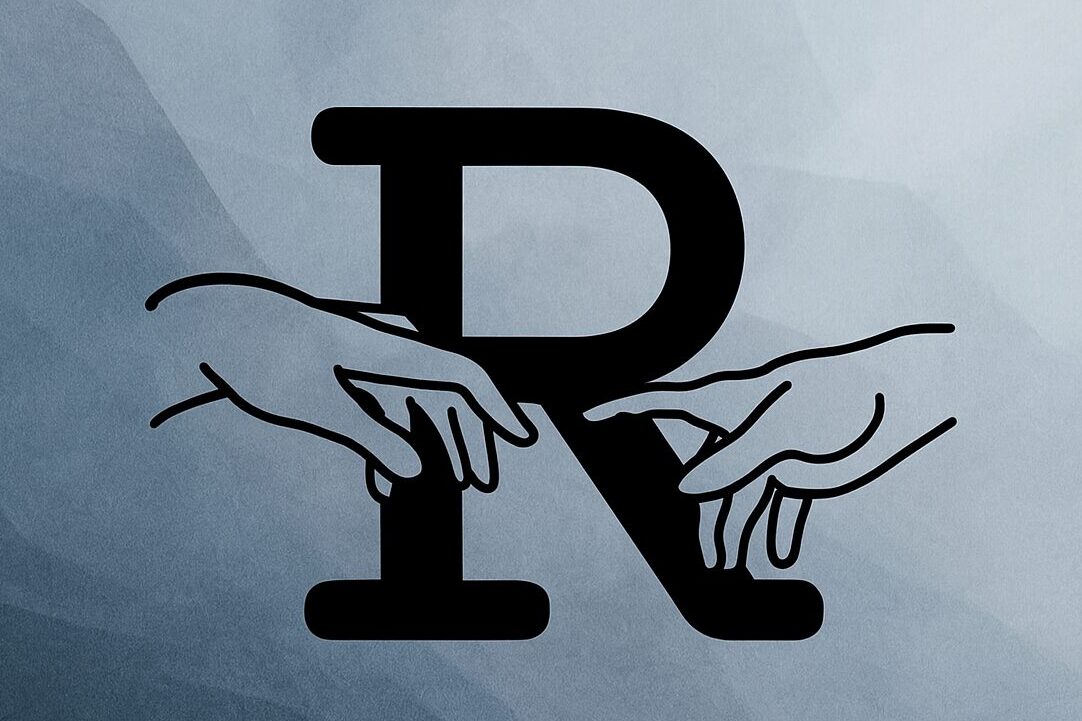
Have a question? Want it answered?
Submit your question below and it maybe answered on the Mind and Spirit Podcast and in this Blog. If you’d like a personal email response, please include your email.*
*Please note: Submitting a question through this form does not constitute therapy, nor is it intended to. It does not establish or initiate a therapeutic relationship. Learn more in our Privacy Policies.
Follow me on Instagram and Facebook or subscribe to the blog for weekly encouragement.
